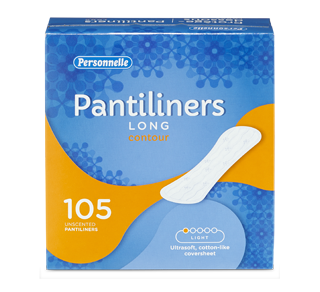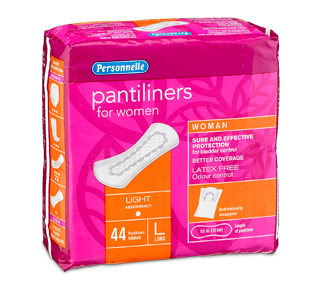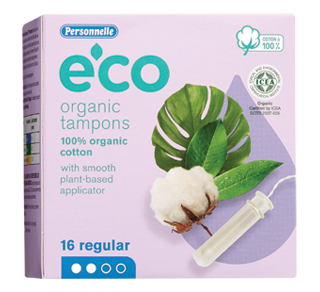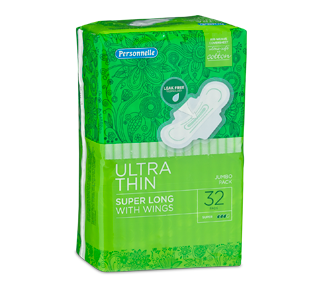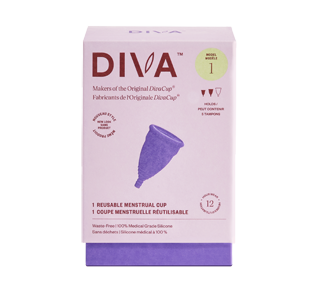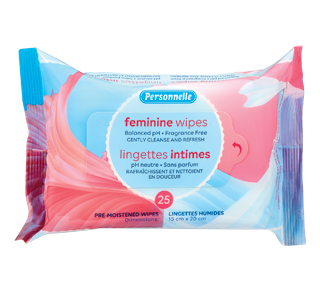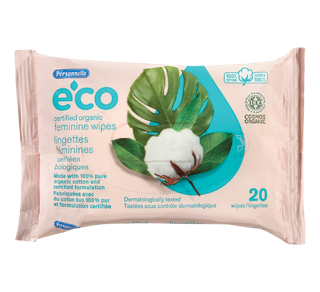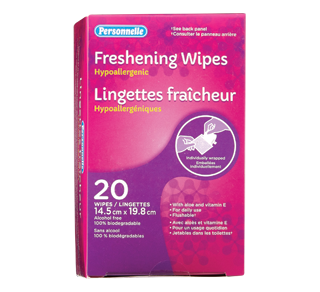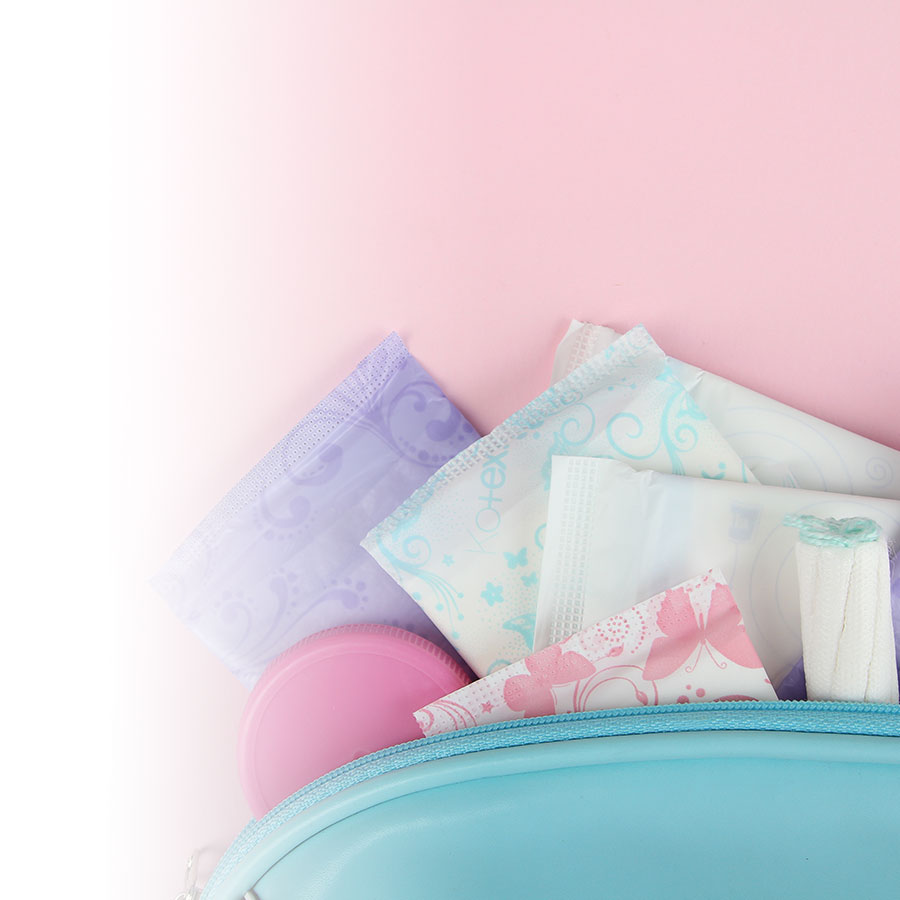Generally speaking, menstruation begins at around the age of 12, but it can occur between the ages of 8 and 15. That's why it's so important to talk to your child about it early and provide them with the items they’ll need to deal with the situation when it arises. Here are a few tips for putting together a period preparation kit.
What are the first signs of menstruation?
First menstrual period generally happens about two years after the breasts begin growing. The appearance of pubic and underarm hair are also signs that menstruation is about to begin.
Signs that may indicate the arrival of menarche (first period):
- Cramps in the lower tummy;
- Swollen, painful breasts;
- White or yellow vaginal discharge;
- A swollen feeling throughout the body (retaining water);
- Increased weight;
- Mood swings.
What should a menstrual preparation kit include?
1. Pantiliners
Pantiliners are ultra-thin sanitary pads designed to absorb excess moisture or liquid, while protecting underwear in the event of vaginal discharge or very light menstrual flow. They’re a good option when she notices the first signs of menstruation.
2. Proper protection
There are three main types of menstrual protection:
- Sanitary napkins are the most basic form of protection. They come in a variety of sizes, shapes and absorbency levels. Choosing the right one depends on her activities, the time of day and her menstrual phase.
- Tampons are slipped into the vagina to absorb the flow. They can be inserted gently, with or without an applicator, and they’re a good choice if she plays sports, especially if she’s swimming.
- Menstrual cups are small, bell-shaped, reusable containers that slip into the vaginal opening to collect blood. Cups are more ecological and economical than other methods.
Want more information? Read our article Choosing the right menstrual protection.
3. Relief from cramps
Menstrual cramps can be painful. Anti-inflammatories, like ibuprofen, which is available without prescription, are a good choice for rapid relief. They should be taken as soon as the cramps and pain begin and continued for two or three days thereafter.
Which treatment is best for your daughter?
Always speak to your pharmacist before choosing a product.
For more information, read our tips How to relieve menstrual pain
4. Personal cleansing towelettes
These towelettes provide a quick way to clean and refresh gently. It’s important to choose products that are free of perfumes and other irritants.
5. Dealing with underwear stains
Menstrual leaking is unpleasant, especially when it happens outside the home. To avoid her having to wear stained underwear all day long, encourage her to keep a small kit with one or two pairs of underwear on hand. Just slip it into her school bag or sports bag and she'll be ready to deal with any nasty surprises!

